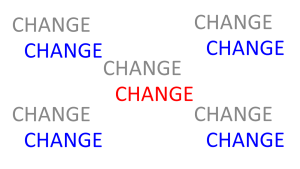I am a lifelong baseball fan. It was my favorite sport growing up, and today I eagerly countdown the days until spring training camps open for MLB teams. It means two things: 1) baseball season is coming and 2) it will bring spring weather with it! MLB has taken its share of lumps in recent years in the court of public opinion. Prodigious home run totals by Mark McGwire, Barry Bonds, and Sammy Sosa were tarnished by allegations of performance enhancing drug usage. And, the sport has lost favor among young people as they have gravitated toward other sports and interests that are more fast-paced than the plodding flow of a baseball game.
Weighing Changes to the MLB Product
Major League Baseball is at a pivotal crossroads. The business of MLB is doing quite well, thank you, with robust revenues from media contracts and sponsorship deals. However, fan relationships with MLB are somewhat tenuous. We have many options for entertainment, including some that do not involve sports and do not require leaving home to venture to a stadium for several hours.
The position that MLB finds itself in has prompted new commissioner Rob Manfred to explore ways to streamline the game consumption experience and pack more action into it. Among the changes proposed by MLB are:
- Speeding up the pace of game play– One of the criticisms of baseball has always been the slow pace of play relative to other sports. This difference is magnified in a world in which we allow ourselves little down time- we multitask, watch top 10 plays of the day, and gather sports news 140 characters at a time. MLB experimented with rules changes to speed up play in the Arizona Fall League including a no-pitch intentional walk (rather than throwing four balls on purpose to walk a batter), maximum 2:30 break between innings as well as during a pitching change, and no more than three “timeouts” per team during a game.
- Increase offense by reducing size of the strike zone– Scoring has decreased steadily since an all-time high of 5.14 runs per game in 2000. Last season, MLB games averaged 4.07 runs per game, the lowest since 1982. The league-wide strike-out rate was the highest ever and the walk rate was the lowest since 1968. One reasons blamed for the decline in runs scored is an expanding strike zone. A review of strike zones in MLB found the average strike zone expanded from 436 square inches in 2008 to 475 square inches in 2014. MLB rules committee will monitor the size of the strike zone in 2015 and consider making changes beginning with the 2016 season.
No rules changes have been made yet for any of the product elements mentioned. But, give MLB credit for acknowledging that issues exist and taking steps to evaluate how to make the product more exciting for fans.
What can be Learned from MLB about Product Marketing
Marketers can benefit from the situation that MLB is currently facing. Specifically, three steps that MLB has taken that could ultimately lead to a better product are:
- Acknowledge flaws– Some of the business metrics for MLB suggest all is well, but leadership is savvy enough to see that flaws exist in the product. When a business is unable or unwilling to acknowledge its weaknesses, there is little chance they will be overcome.
- Learn from others– If your business is falling short in some way when it comes to delivering the best customer experience and you acknowledge it, a useful first step can be to observe how others have dealt with similar issues. In the case of MLB, it has borrowed practices from the NFL and NBA to incorporate video review of uncertain umpire calls and the pace of play experiments. Sometimes, you can even go outside your industry or category to learn from other firms’ successes in improving the customer experience.
- Don’t assume– While there has been much talk about pace of play diminishing the MLB consumption experience, it may not be the culprit when it comes to turning off prospective baseball fans. It has been pointed out that the length of NFL and college football games have increased, yet the popularity of those sports is as high as ever. If MLB focused all of its product improvement efforts on speeding up the game because they thought that is what mattered to people, it would have overlooked the decreasing run scoring trend. One of the easiest traps we fall into as marketers is a false belief that we understand what is happening in the market and know what our customers want because of our experience. Simply put- don’t make assumptions!
Will MLB implement changes that it has been floating? The brand has one other characteristic that is somewhat unique; baseball is a sport steeped in tradition. Change may be hard to sell to traditionalist fans. But, given that businesses operate in environments that are ever changing, it is incumbent on all marketers to embrace the possibilities of change.


